Abstract
A survey of 8 274 people in the Ghana-2101 project area showed that 12% were passing ova of Schistosoma haematobium in the urine, the infection rate rising to a peak of 34% in males 15-19 years of age. S. mansoni, despite the wide distribution of its potential intermediate host, was not encountered in 1 698 boys examined for it. Urinary schistosomiasis in northern Ghana is focal in character and is usually contracted in standing water during the dry season. A method of control was developed that depends on the identification of localities subject to relatively intense and prolonged transmission, followed by dry season mollusciciding of the water sources in each locality infested with the snail hosts. Two such control cycles were carried out in 30 localities. The results suggest that selective, dry season, focal control of schistosomiasis can be effective in reducing transmission.
Full text
PDF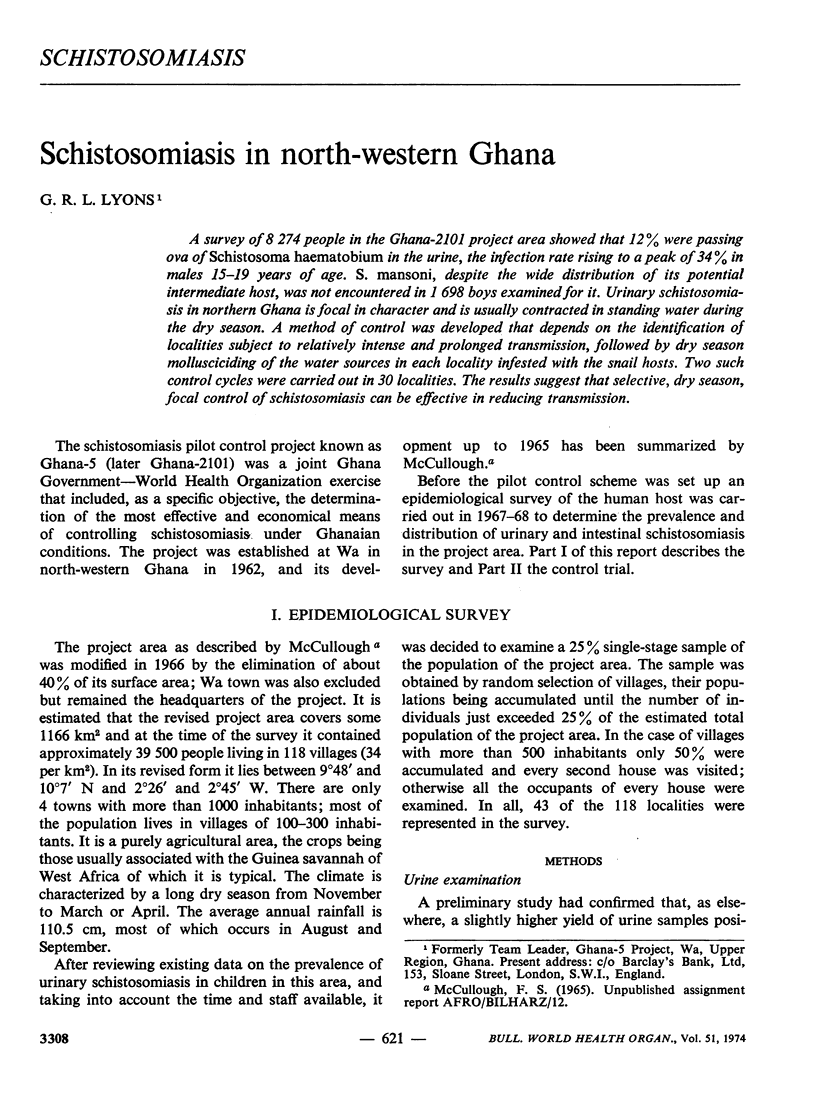
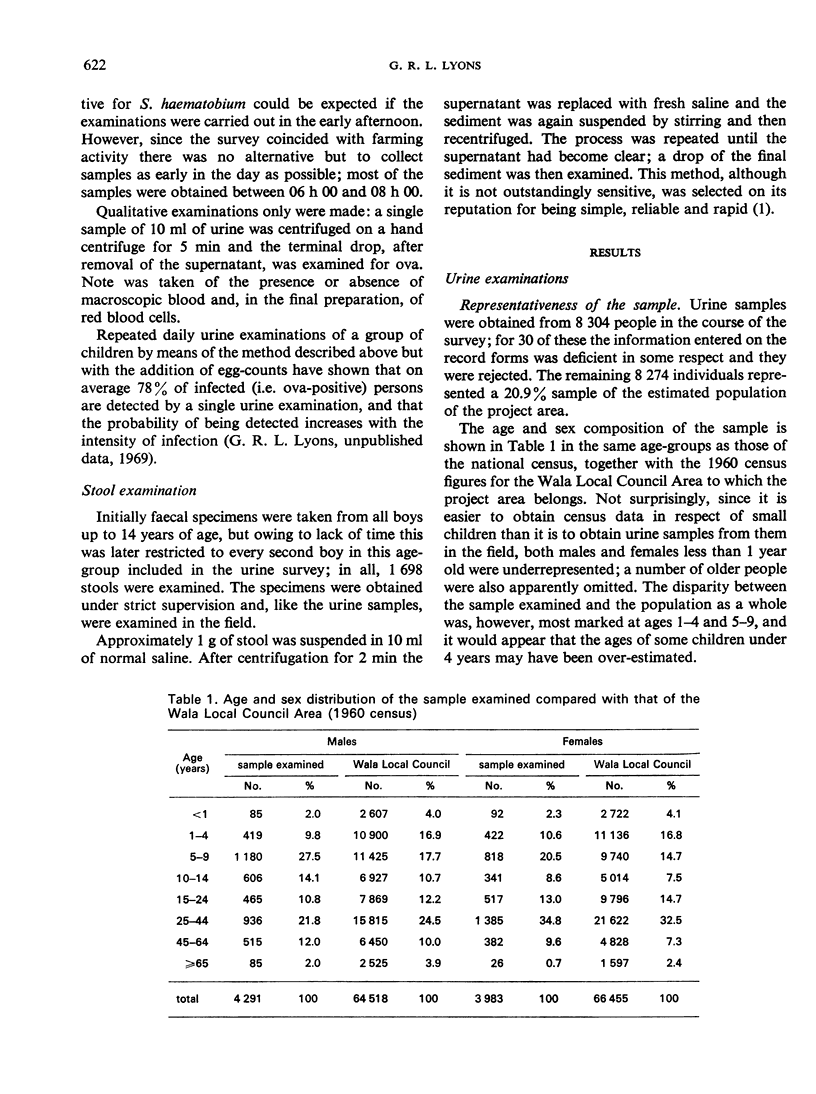
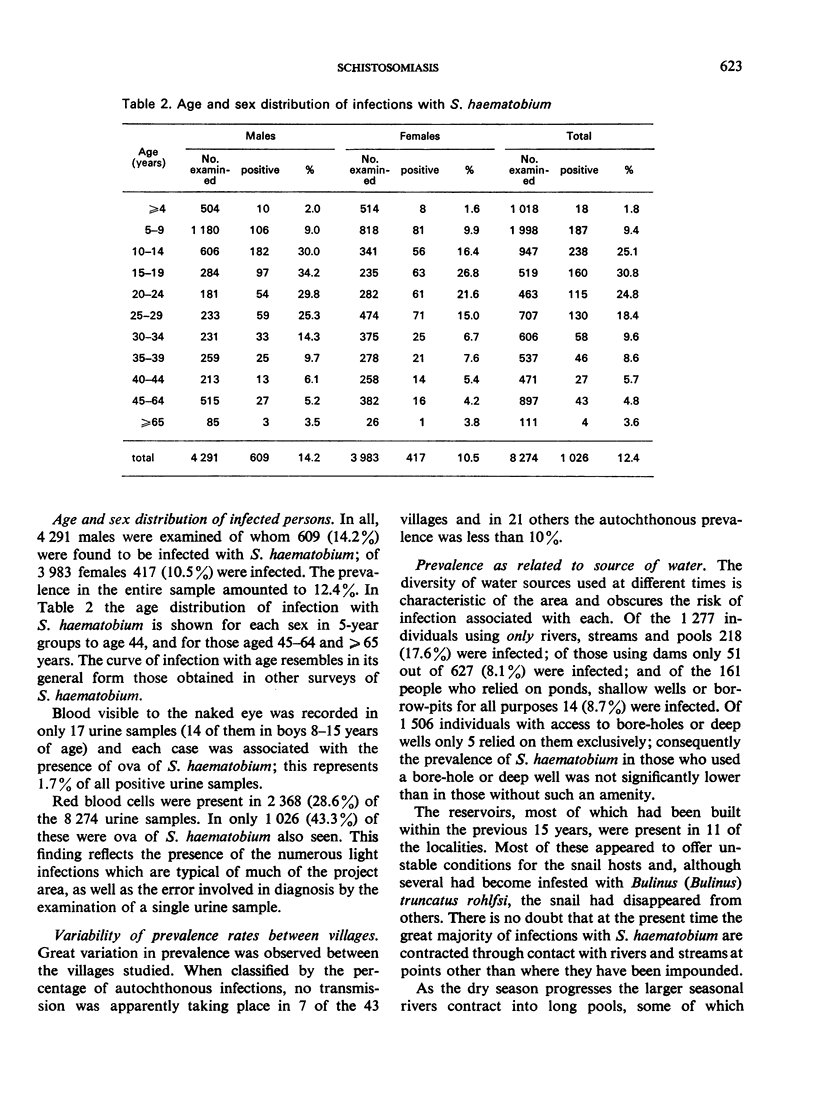
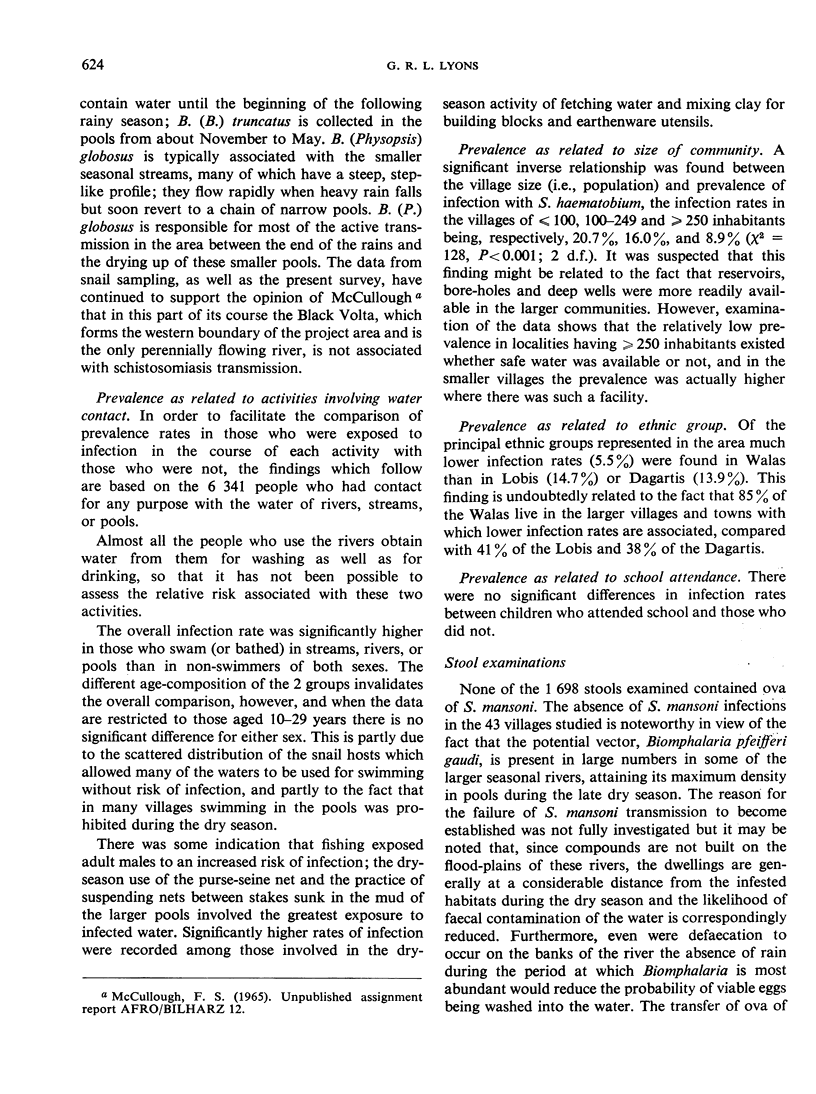

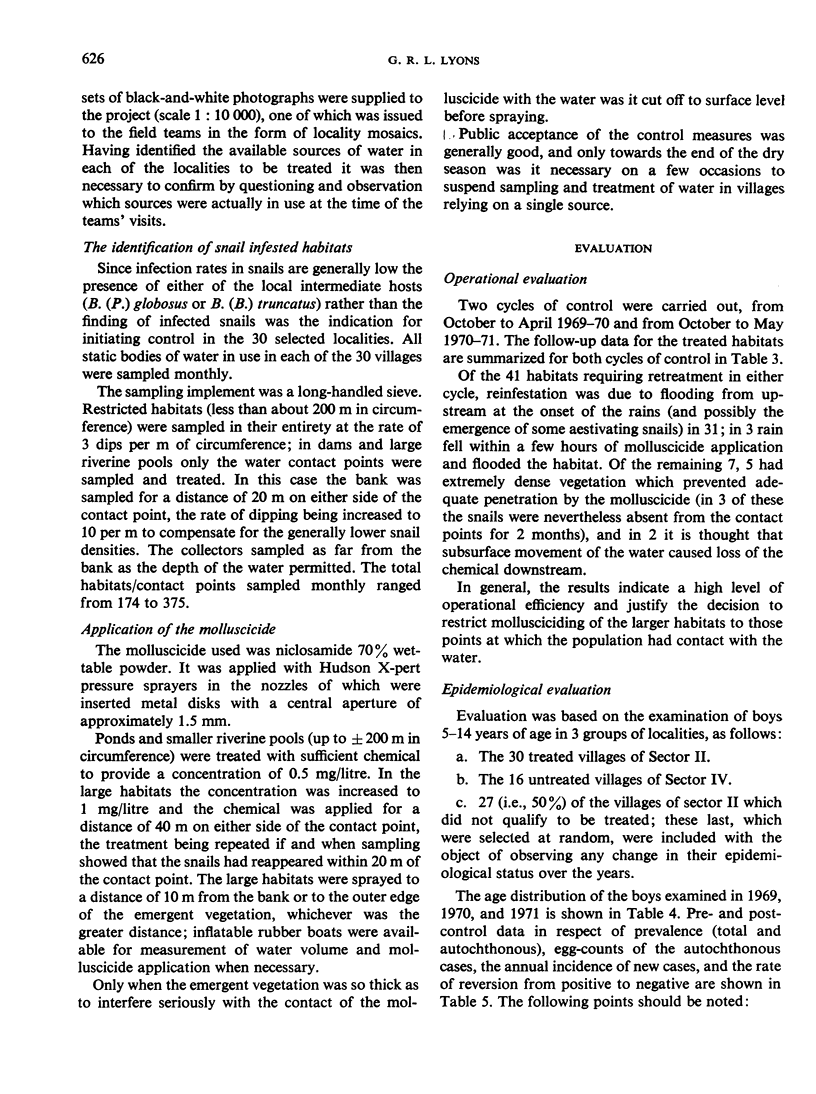


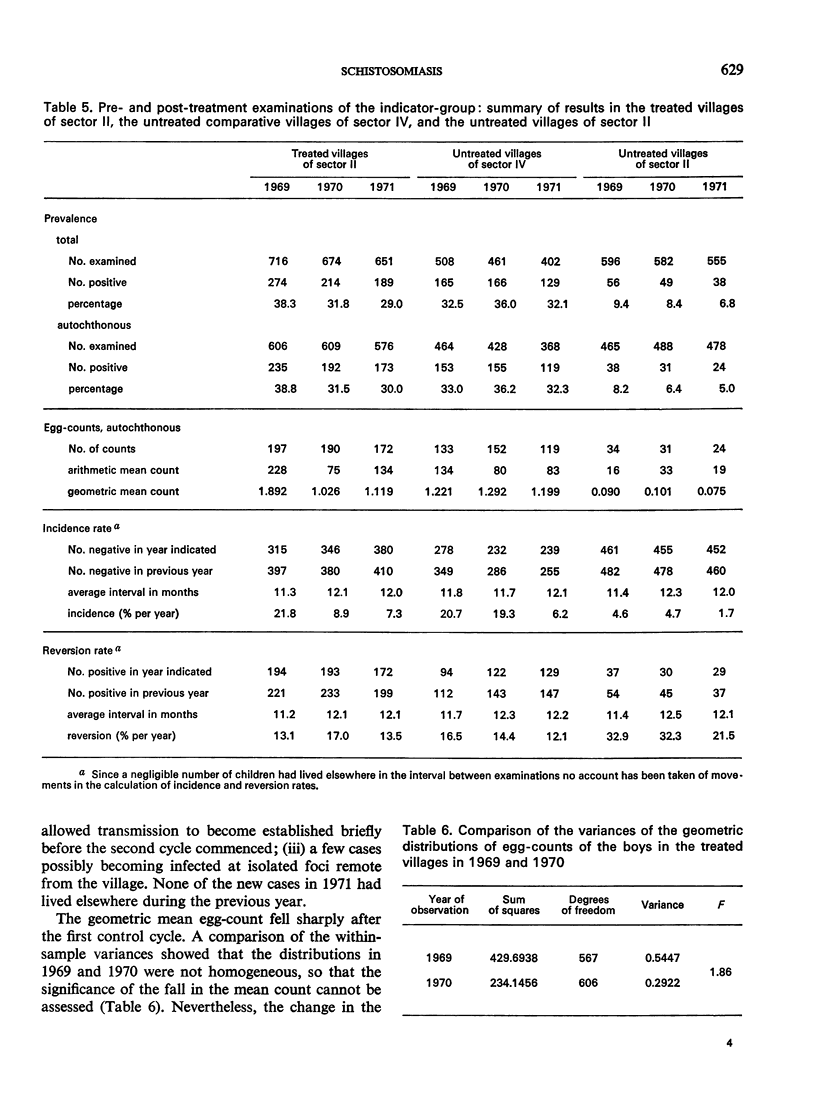
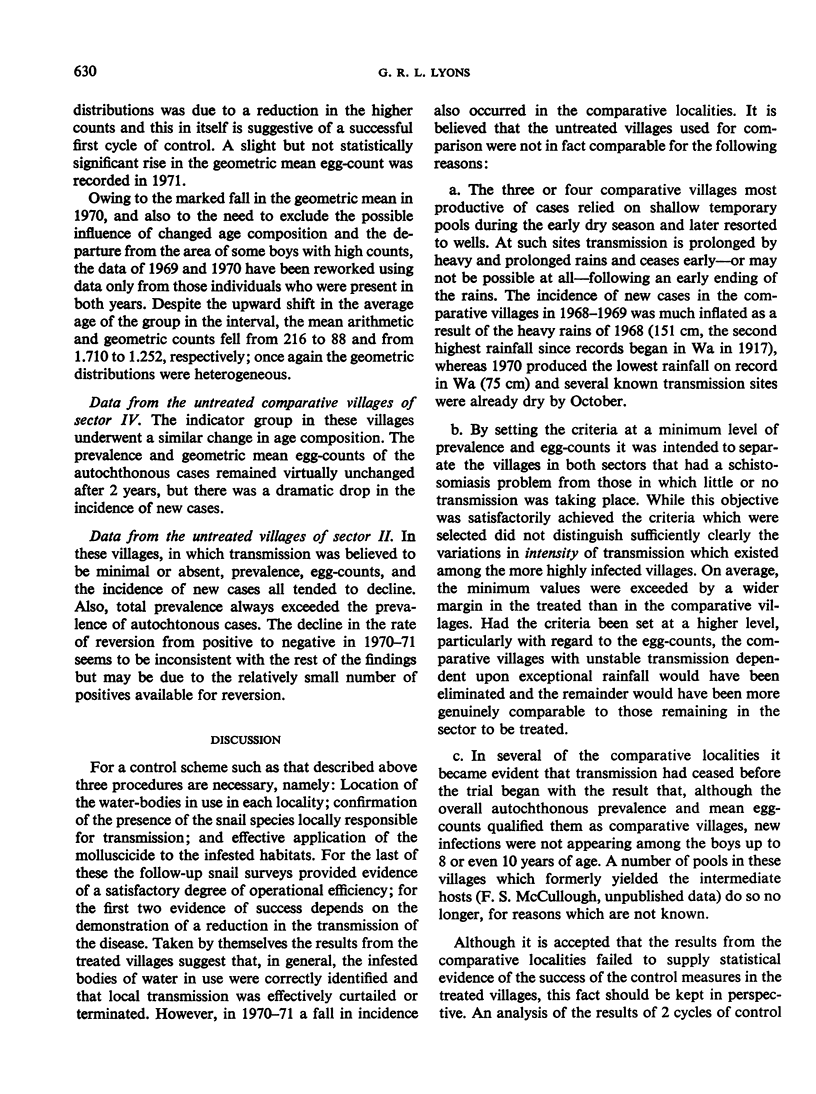
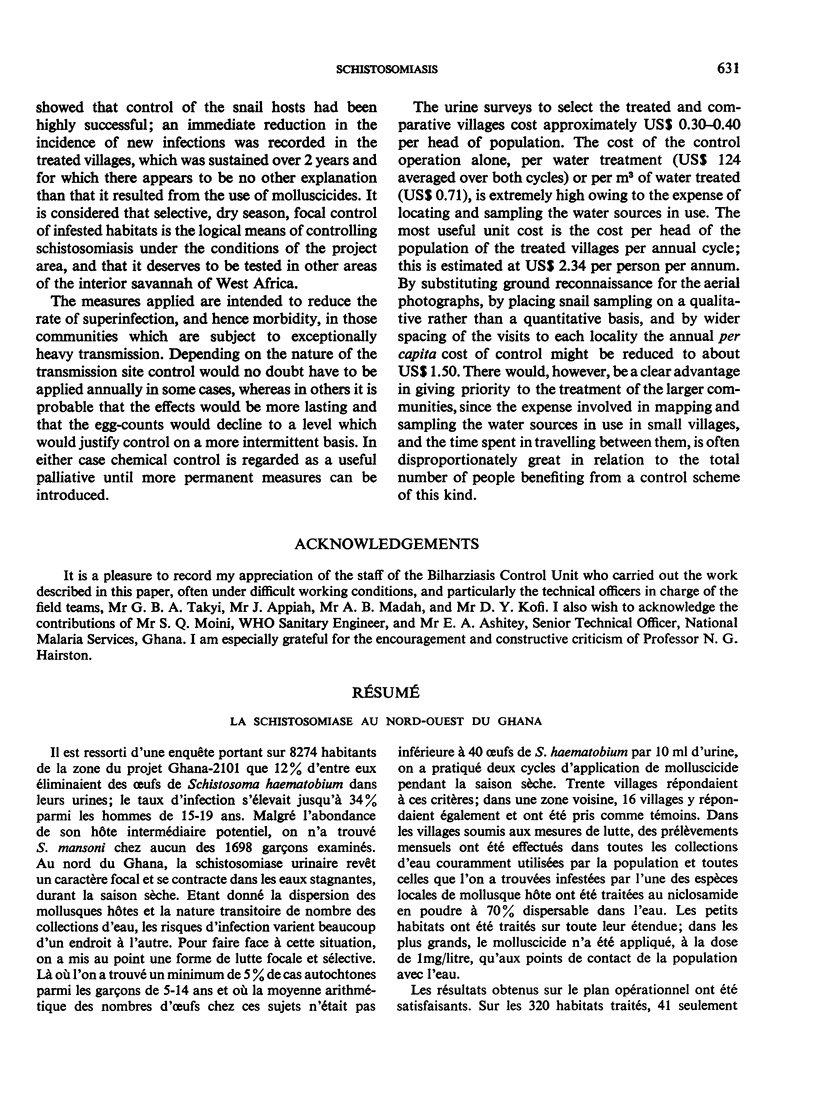
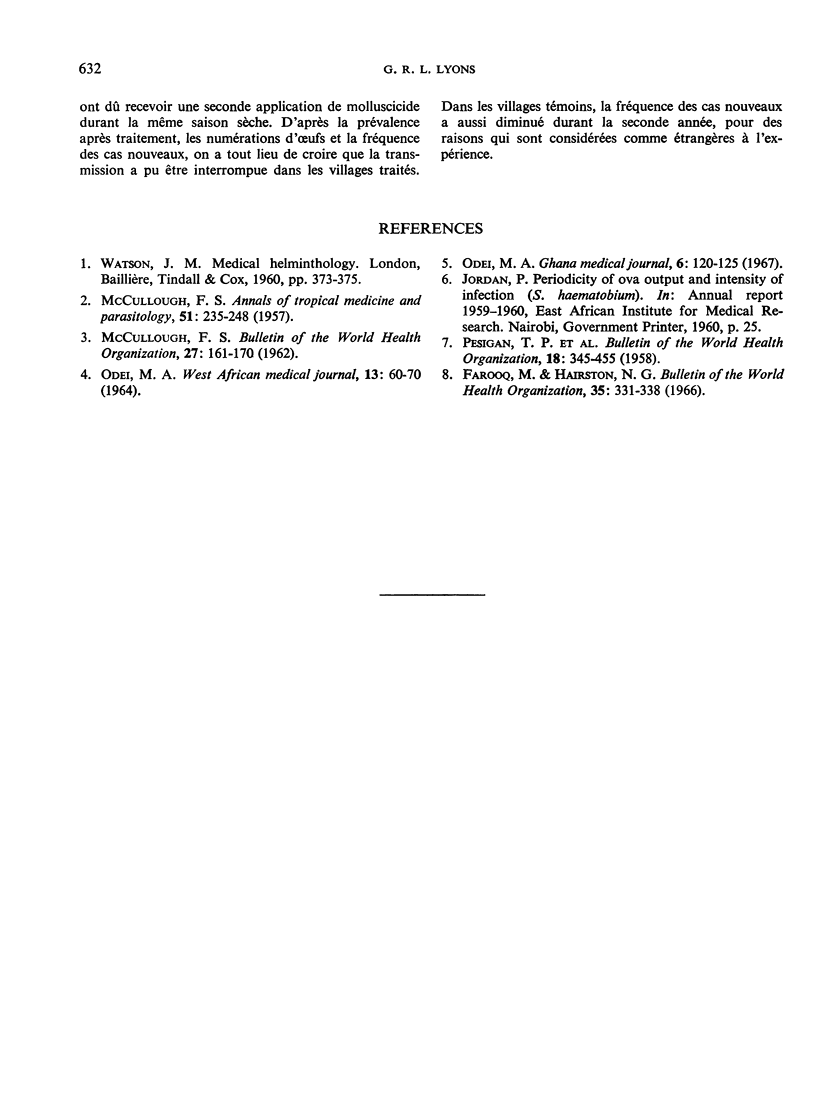
Selected References
These references are in PubMed. This may not be the complete list of references from this article.
- Farooq M., Hairston N. G. The epidemiology of Schistosoma haematobium and S. mansoni infections in the Egypt-49 project area. 4. Measurement of the incidence of bilharziasis. Bull World Health Organ. 1966;35(3):331–338. [PMC free article] [PubMed] [Google Scholar]
- PESIGAN T. P., FAROOQ M., HAIRSTON N. G., JAUREGUI J. J., GARCIA E. G., SANTOS A. T., SANTOS B. C., BESA A. A. Studies on Schistosoma japonicum infection in the Philippines. 1. General considerations and epidemiology. Bull World Health Organ. 1958;18(3):345–455. [PMC free article] [PubMed] [Google Scholar]


